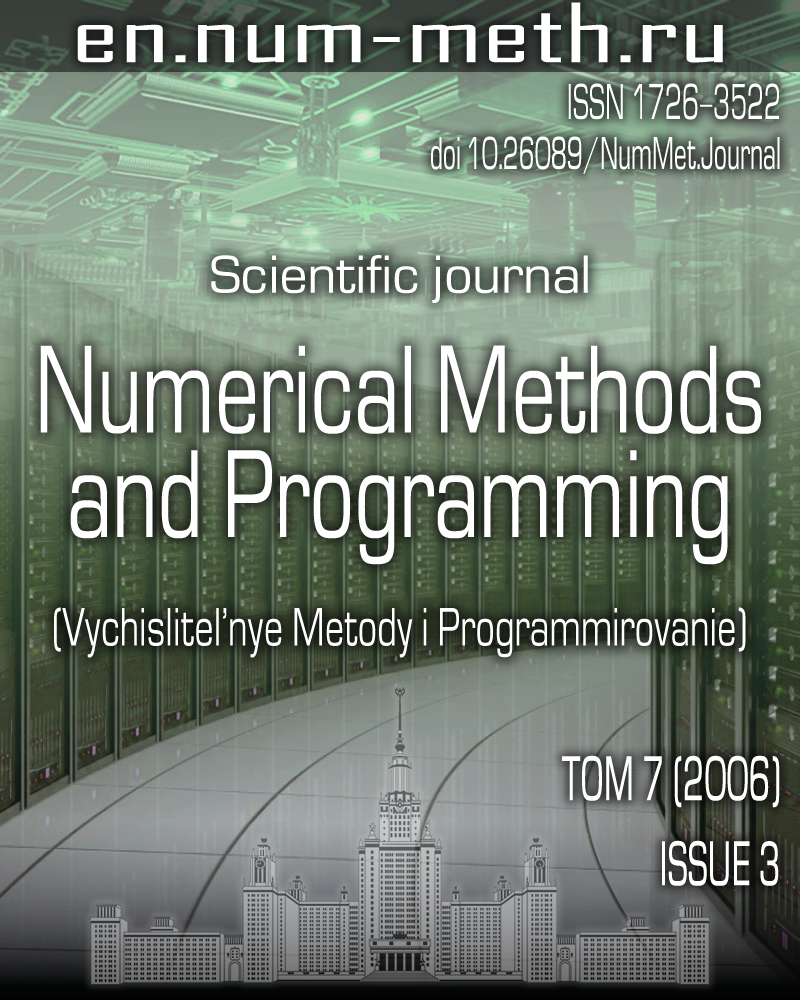Wall boundary conditions and mesh dependency of the solution for the calculations of turbulent flows on unstructured meshes
Keywords:
Abstract
he specification and numerical implementation of boundary conditions on a wall in the calculations of turbulent flows on unstructured meshes are considered. Advantages and shortcomings of wall function approach and its features of implementation for different turbulence models are discussed. The way of implementation of weak boundary conditions on the wall for the discretization of Reynolds-averaged Navier-Stokes equations with the help of finite volume method is proposed. The possibilities of the approach developed are demonstrated by the example of the solution of some model problems of gas dynamics. The influence of near-wall mesh spacing on calculation accuracy is studied and the solution mesh dependency is compared for the wall functions and weak boundary conditions.
Published
Issue
Section
References
- Волков К.Н. Применение метода контрольного объема для решения задач механики жидкости и газа на неструктурированных сетках // Вычислительные методы и программирование. 2005. 6, № 1. 43-60.
- Spalart P.R., Allmaras S.R. A one equation turbulence model for aerodynamic flows // AIAA Paper. 1992. N 92-0439.
- Launder B.E., Spalding D.B. The numerical computation of turbulent flows // Computational Methods in Applied Mechanics Engineering. 1974. 3. 269-289.
- Bredberg J. On the wall boundary condition for turbulence model // Chalmers University of Technology, Department of Thermo and Fluid Dynamics. Internal Report 00/4. Göteborg, 2000.
- Волков К.Н. Сравнение низкорейнольдсовых моделей турбулентности с данными прямого численного моделирования течения в канале // Теплофизика и аэромеханика. 2005. 12, № 3. 365-378.
- Wolfshtein M. The velocity and temperature distribution of one-dimensional flow with turbulence augmentation and pressure gradient // International Journal of Heat and Mass Transfer. 1969. 12, N 3. 301-318.
- Collis S.S. Discontinuous Galerkin methods for turbulence simulation // Stanford University, Center for Turbulence Research. Technical Report. 2002.
- Wieghardt K., Tillman W. On the turbulent friction layer for rising pressure // Nat. Adv. Comm. Aero. Report N TM-1314. 1951.
- Yoder D.A., Georgiadis N.J. Implementation and validation of the Chien k- varepsilon turbulence model in the WIND Navier-Stokes code // AIAA Paper. 1999. N 99-0745.
- Coles D.E., Hirst E.A. Computation of turbulent boundary layers // Proceedings of AFOSR-IFP Stanford Conference. Vol. 2. Stanford University. Standord, 1968.
- Teekaram A.J.H., Forth C.J.P., Jones T.V. Film cooling in the presence of mainstream pressure gradients // ASME Journal of Turbomachinery. 1991. 113. 484-492.
- Волков К.Н. Влияние градиента давления и локализованного вдува на турбулентный теплообмен плоской пластины // ТВТ. 2006. 44, № 3. 24-32.
- Northrop A., Owen J.M. Heat transfer measurements in rotating-disc systems. Part 1: The free disc // International Journal of Heat and Fluid Flow. 1988. 9, N 1. 19-26.
- Dorfman L.A. Hydrodynamic resistance and heat loss of rotating solids. Edinburgh: Oliver & Boyd, 1963.
- Волков К.Н. Момент сопротивления диска, вращающегося в закрытой осесимметричной каверне // Прикладная механ. и техн. физика. 2006. 47, № 1. 153-160.
- Daily J.W., Nece R. Chamber dimension effects on induced flow and frictional resistance of enclosed rotating discs // ASME Journal of Basic Engineering. 1960. 82. 217-232.
- Kreith F. Convection heat transfer in rotating systems // Advances in Heat Transfer. 1968. 5. 129-251.


